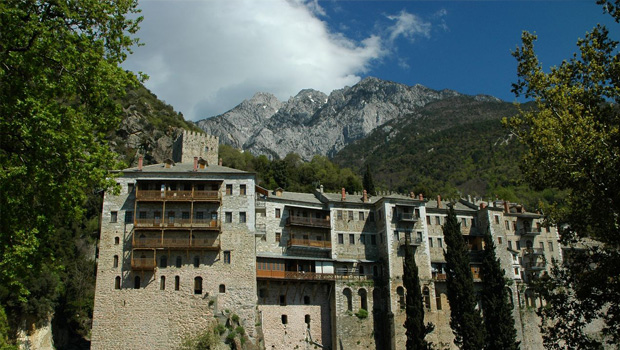
11 Αυγ Mount Athos, Chalkidiki
Mount Athos is a mountain and peninsula in northeastern Greece and an important centre of Eastern Orthodox monasticism. It is governed as an autonomous polity within the Greek Republic. Mount Athos is home to 20 monasteries under the direct jurisdiction of the Ecumenical Patriarch of Constantinople.
Mount Athos is commonly referred to in Greek as the “Holy Mountain” (Ἅγιον Ὄρος, Hágion Óros) and the entity as the “Athonite State” (Αθωνική Πολιτεία, Athoniki Politia). Other languages of Orthodox tradition also use names translating to “Holy Mountain”, including Bulgarian and Serbian Света гора, Sveta gora; Russian Святая гора, Svyatya gora; Georgian მთაწმინდა, mtats’minda. In the classical era, while the mountain was called Athos, the peninsula was known as Acté or Akté (Ἀκτή).
Mount Athos has been inhabited since ancient times and is known for its nearly 1,800-year continuous Christian presence and its long historical monastic traditions, which date back to at least 800 A.D. and the Byzantine era. Today, over 2,000 monks from Greece and many other countries, including Eastern Orthodox countries such as Romania, Moldova, Georgia, Bulgaria, Serbia and Russia, live an ascetic life in Athos, isolated from the rest of the world. The Athonite monasteries feature a rich collection of well-preserved artifacts, rare books, ancient documents, and artworks of immense historical value, and Mount Athos has been listed as a World Heritage site since 1988.
Although Mount Athos is legally part of the European Union like the rest of Greece, the Monastic State of the Holy Mountain and the Athonite institutions have a special jurisdiction which was reaffirmed during the admission of Greece to the European Community (precursor to the EU). This empowers the Monastic State’s authorities to regulate the free movement of people and goods in its territory; in particular, only males are allowed to enter.
Source: wikipedia

